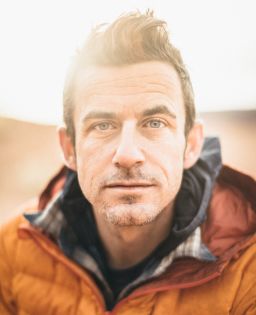Editor’s Note: Brendan Leonard is a former contributing editor to Climbing magazine, and author of the climbing memoir “Sixty Meters to Anywhere.” The opinions expressed in this commentary are solely those of the author.
Story highlights
Brendan Leonard: After Mount Everest deaths, some ask: Why do something so dangerous?
He says the side of a mountain is a wild place where in many ways you're more in control than in a car
Camp 4 on Mount Everest, the final camp before the summit, is a place most of us will only ever see in photos: perched at 26,180 feet on the shoulder between the giants of Mount Everest and Lhotse, the fourth-highest mountain in the world, the place is utterly unlivable, blasted by winds that rip snow from rock and cast it into the surrounding air – air so thin it’s hard to take a step without gasping for breath.
From there, climbers look up at the 29,029-foot summit, less than 3,000 vertical feet away, and hope to see clear skies, and no wind cascading spindrift into the sky off the top of the peak.

It was the highest point Australian Maria Strydom, 34, would reach on her attempt to climb Everest. Strydom died of high-altitude cerebral edema descending Camp 4 on Saturday. Her sister called her death “an incredible waste.”
News of her death, and of three other climbers on Everest in the past week, made international headlines, with many people asking, rhetorically or not: Why?
It’s a perfectly sensible question. We’ve spent our entire history as a species trying to eliminate all the things that can kill us, and for the most part have escaped the food chain, so why would anyone spend a vacation climbing a mountain whose top is referred to as “the Death Zone”?
I can’t speak for Maria Strydom or other Everest climbers, because I’ve never been on Everest. But I have climbed dozens of other mountains and can tell you why I keep going back. The side of a mountain is one of the wildest places we have left in the world: exposed to the elements, hard to reach, and not at all a place you can just sit down and call a taxicab if you decide you’re not having that much fun.
If you get cold, you put on another jacket, pull your hood up, and keep moving. If you get tired, you tell yourself you’re not that tired, and you keep moving. You carry all your food and water on your back. There are no aid stations where you can stop for a sports drink or an energy gel when you get hungry or thirsty. You understand that you are in a beautiful, but unforgiving place, and ideally, you make all decisions with getting home safely at the front of your mind.
Mountains are wonderful places because they are dangerous. There are no warning signs and no safety railings. In a world full of rules, wild places offer freedom to roam and explore, both the terrain and our own limits.
Most of us spend our days in sterile environments, protected from the elements, and numbed by hours of staring at glowing screens and being “busy.” The mountains are a brief escape from that. No one will ever tell you that reading emails and staring at spreadsheets makes them feel alive, but on the side of a mountain, they might say exactly that.
“Why?” is a question we’ll always ask when people die doing something we perceive as dangerous. Climbing mountains is a high-visibility way to perish. People don’t set out on a climb believing they will die doing it, just as no one who dies in an automobile accident on the way to work does. You control the variables you can, and in your mind, you make peace with the risks.
We all have ways of rationalizing our behavior, whether it’s climbing Everest, or riding a motorcycle on streets in a country that has an automobile accident every six seconds, or keeping loaded guns in our car or house, or not changing our diet when our doctor tells us we need to lose weight.
Army expedition for Everest
Climbers (including myself) often feel that the mountains are a place where we’re most in control of what happens, believe it or not. If you make what you see as good decisions and can mitigate variables like avalanches, weather, and geology, there’s really no one to blame besides yourself if things go wrong up there.
I’m mostly OK with the risks I take in the mountains, but the idea of riding a motorcycle amid hundreds of drivers who are probably looking at their smartphones scares the hell out of me.
When people die on Everest, I know it’s coming: the headlines, the internet commenters, people judging someone’s life choices from a million different angles. I may not understand what their motivations were to try to climb the highest mountain in the world, but I understand why they climb mountains.
Join us on Facebook.com/CNNOpinion.
Read CNNOpinion’s new Flipboard magazine.
Brendan Leonard is a former contributing editor to Climbing magazine, and author of the climbing memoir “Sixty Meters to Anywhere.” The opinions expressed in this commentary are solely those of the author.


































